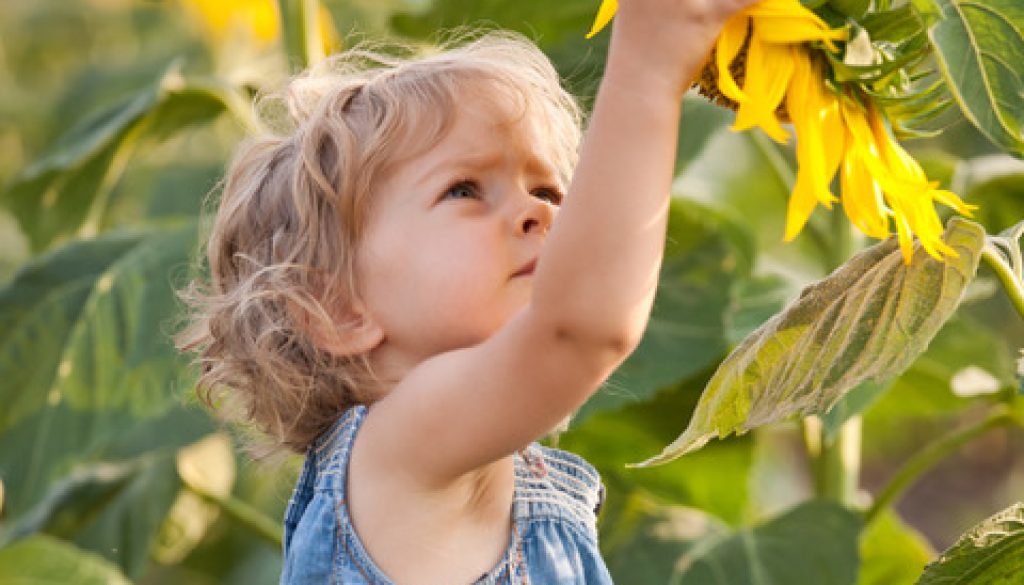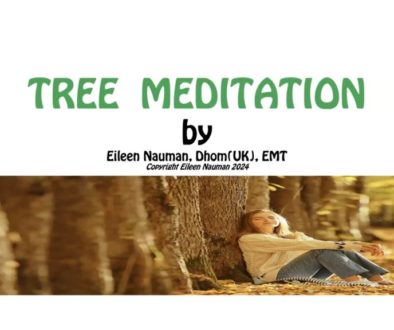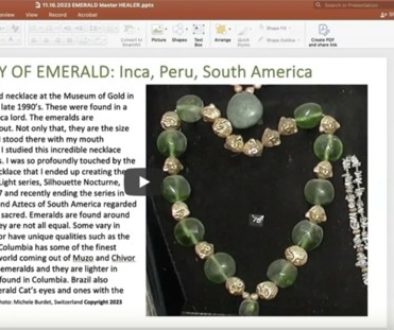Talking with Flowers
My mother, Ruth, would take me out on walks around where we lived. By the time I was 18, we’d lived in 22 different places in five different states, including California, Oregon, Arizona, Montana, and Idaho. We were a wandering clan, to say the least. Despite all these moves, my mother never stopped going on her herb walks or teaching me about them. These proved to be a treasure trove of information. The benefit of living in so many different places growing up was that I got to see a variety of medicinal herbal plants.
One of the first lessons I received from her at a young age was learning to talk with and learn from the “flower people.” She would find a nice place to sit where there was a group of flowers. She’d asked me to pick one out that called to me. “Calling” didn’t mean a verbal, “Hey! Come over here!” No, she would touch her heart with her hand and tell me that I would feel the calling—and that all communication was from one’s heart, not the voice we use all the time in regular conversation with other human beings.
“Sometimes it’s a tug, as if there is an invisible golden string tied between the flower who wants to connect with you and your heart,” she would tell me. “Or, you may hear a little, high pitched voice in your head, asking you to come and sit with an individual flower.” “Or, perhaps there is a cooling or warming feeling in your hands or heart, or both, and you are drawn to a particular flower and guided to it.”
All those sensations are a calling card to a flower. My way of feeling them was excitement. For example, I could walk among a group of clovers or daisies and when I drew near one that wanted to connect with me, I’d feel this deluge of excitement overcome me. It was this joyous, over-the-top feeling of “I found you!” My mother said that there were many ways a flower may call you, and this was the way they called to me from an early age.
She also taught me to use a pinch of yellow cornmeal from inside a small pouch she’d made for me to carry. I would give it to the flower as a gift and introduction. I would either speak out loud or in my head, which Mom called telepathy. I would give the flower the cornmeal gift, introduce myself by name, and ask permission if I could sit with it. Finding out what “yes” and “no” felt like, was very easy for me. After introductions and asking if I could sit with the flower, I’d feel energy arms sliding around me, pulling me forward, inviting me to sit with the flower. And this feeling of an embrace was always filled with joy and love. If a flower didn’t want me to sit with it, I would feel nothing. I learned that was a “no.” Other people may feel or sense something else meaning “no.”
Next, I would ground myself. I would close my eyes and visualize silver tree roots wrapping gently around each of my ankles, the point of each root going into the center of each foot (there was no pain or discomfort), and then very, very deep into the soil of Mother Earth. Once this was done, I would wait. Often, the flower would “talk” to me in my head. She would show me a picture of herself, perhaps, or show me her roots. Then, she would share how she could help a two-legged (human being). Even flowers, by themselves, placed in clean water and left to sit for an hour out in sunlight, could give their form of energy to help someone who was ailing—and it was all energy.
When the flower was finished telling me what she wanted me to know, I always thanked her from my heart, opened my eyes, gave her a second pinch of cornmeal, and then went to where my Mom was sitting. On this occasion, she told me that these were Shasta daisy. They were tall, with white petals and a golden center. Most of all, she wanted to talk about the roots of them. I recall this flower showing me how the roots of her were entangled and connected to the other daisies in the surrounding area of the field. It looked like balls of yarn that had been thrown up into the air and all the different yarns were wrapped up within each other. When I saw roots like that, it meant that if there was an illness inside our body that was interconnected to other organs or systems, that it could be of help. Meaning, like could cure like.
It was only decades later, that I saw this “entanglement” in cancer cells that had invaded someone’s body. They looked exactly alike! The idea that like could cure like became more of a focus for me around the age of forty when I stumbled upon homeopathy—an alternative healing methodology. Homeopathy taught the same method in what is called The Doctrine of Signatures.
In the old days, indigenous people from around the world talked and worked with plants, plants, grass, fungi, and everything else. The plants told them what they would be good for to heal a human. Today, a woman by the name of Monica Gagliano, https://www.monicagagliano.com/, has written a wonderful book from her own experiences with plants, “Thus Spoke the Plant.” She is a senior research fellow at the Biological Intelligence (BI) Lab at the University of Sydney, in Australia. She has been a bridge builder between the old ways of talking and learning from plants, and as a scientist who has found a way to ‘talk’ with them to prove that certain plants are alive and that they can speak to us!
If you feel drawn to “talk with a flower,” just follow the steps I’ve shared here. And let me know what your experience was! Take photos, too!



